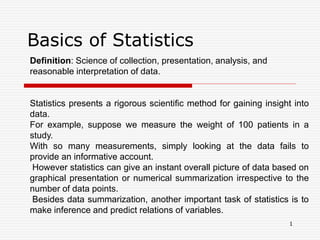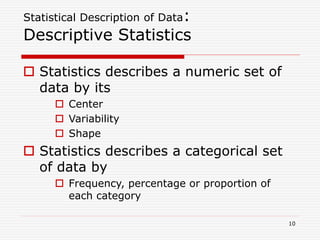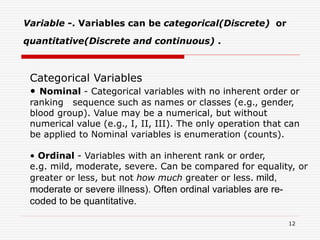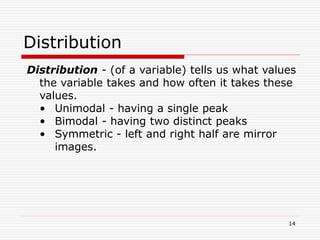This document provides an overview of basic statistics concepts. It defines statistics as the science of collecting, presenting, analyzing, and reasonably interpreting data. Descriptive statistics are used to summarize and organize data through methods like tables, graphs, and descriptive values, while inferential statistics allow researchers to make general conclusions about populations based on sample data. Variables can be either categorical or quantitative, and their distributions and presentations are discussed.




















